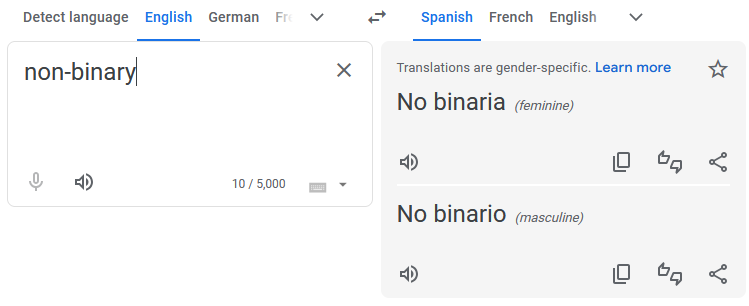this post was submitted on 29 Nov 2024
246 points (95.9% liked)
Linguistics Humor
1466 readers
48 users here now
Do you like languages and linguistics ? Here is for having fun about it
For serious linguistics content: [email protected]
Rules:
- 1- Stay on Topic
Post about linguistics or language humor & memes - 2- No Racism/Violence
- 3- No Public Shaming No shaming someone that could be identifiable or recognizable
- 4- Avoid spam and duplicates
founded 2 years ago
MODERATORS
you are viewing a single comment's thread
view the rest of the comments
view the rest of the comments

I believe the Filipinos which have a lot of spanish grammar would substitute in English if the Spanish based grammar confused them
Filipinos ignore Spanish grammar entirely and only use Spanish words as roots. Their languages have nothing in common with Spanish and Spanish words only remain because they were occupied for 300+ years by Spain.
For example, "pants" in Tagalog (official dialect of the Philippines) is "pantalon" like Spanish, but the plural is "mga pantalon" due to Tagalog grammar, not "pantalones" as in Spanish (see also "oras," which doesn't indicate plural) #. They spell things differently because they don't have a V sound (so vaca - > baka) and they conjugate with Tagalog rules, not Spanish (e.g. "intindi" meaning "understand" becomes "maintindihan" instead of "entienda/entiendas/entendamos").
Spanish words are merely loan words in Tagalog, Filipinos don't generally speak Spanish. Most don't even know which words came from Spanish and which came from native Tagalog (or other Filipino languages) because they're treated the same. If a word is not clearly understood, they'll use the English, not Spanish, because most speak passable English and few speak Spanish.
Also, Filipino has no genders in grammar, the only gendered words are Spanish loan words. For example, uncle/aunt are tito/tiya from Spanish, but son/daughter is "anak," and pronouns are "siya" (he/she), "niya" (his/her), "sila" (they/them), "nila" (they/them), "sa kanya" (to him/her), and "sa kanila" (to them). You have to go out of your way to specify gender in Tagalog, which awesome.